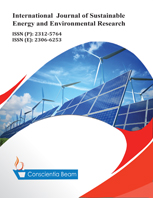Using Refined Phosphogypsum to Replace Natural Gypsum in Portland Cement Production in Vietnam
DOI:
https://doi.org/10.18488/journal.13.2019.81.62.69Abstract
This study assessed the effects of different contents of two refined phosphogypsums (PG1, PG2) on standard consistency, setting times, compressive strength and sulfate resistance of cement. PG2 possesses higher water-soluble impurities such as P2O5, F content than PG1. The results were compared to those of cement containing natural gypsum (NG). The results showed that water demand of cement reduces when the content of the gypsums increases, especially with PG1 and NG. The phosphogypsums prolong the setting times of cement. The higher the gypsum content is, the more the 3-d compressive strength of cement can obtains. The low impurity phosphogypsum (PG1) accelerates the 3-d strength but lowers the 91-d strength of cement compared to the high impurity phosphogypsum (PG2). The strength of cement containing NG is always between those of the phosphogypsums at the ages of 3 and 91 days. There is a suitable content of gypsum to produce the highest strength of the cement at the ages of 28 and 91 days. Deterioration of the cement in sodium sulfate solution (50g/l) is more severely when increasing gypsum content. The sulfate resistance of cement containing PG1 is lower than that of cement containing PG2 or NG.

